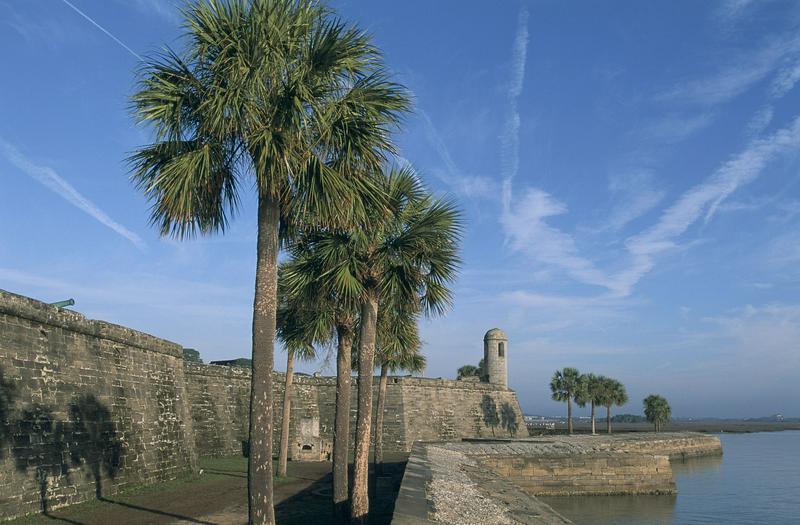The Oldest City in the U.S. – St. Augustine, Florida
By | November 22, 2018

The oldest continuously occupied city in the United States? Nope, it’s not Plymouth or Jamestown or Boston. It’s St. Augustine, Florida. The city was founded on September 8, 1565, a full 55 years before the Pilgrims set foot on Plymouth Rock and 211 years before the colonists declared their independence from the British. Yet most elementary school textbooks neglect to mention that the Spanish were firmly established in St. Augustine before the English settled in New England. Let’s look at the unique history of the oldest city in the United States.

A Spanish Admiral and Crew Settled Near a Native American Village
When Admiral Pedro Menendez de Aviles and his diverse crew of more than 800 came ashore in 1565, they found a large Native American settlement in the coastal marshlands of Florida. In fact, the Native American village of Seloy, occupied by the Timucua people, had lived in the area for at least the past 500 years. They established a well-organized community that hunted, fished, and did small-scale farming. Menendez and his group set up camp nearby.

The Spaniards and the Native Americans had a Thanksgiving Feast
According to records, Menendez and his crew were on friendly terms with the Timucua people. In fact, both groups sat down to a Feast of Thanksgiving, a fellowship in celebration of the bountiful harvest, more than five decades before the Thanksgiving dinner in New England that became part of American culture.

The Spanish Built a Mission Church
Father Francisco Lopez, who sailed with Menendez, performed the first Catholic Mass in the New World. Lopez led the crew in the construction of a mission church, which became the oldest Catholic parish in the United States. The original church is no longer standing…today’s Mission Nombre de Dios church now sits on the site of the original church.

Two Forts Guard St. Augustine
In 1672, more than one hundred years after St. Augustine was founded, work began on a large fort that would protect the city from a sea invasion. Castillo de San Marcos, designed by Ignacio Daza, is the oldest masonry fort in the continental U.S. The governor of the region, Francisco de la Guerra y de la Vega, ordered the construction of the fort after an English privateer, Robert Searles, sacked St. Augustine in 1668. Construction on Castillo de San Marco wrapped up in 1695.

A Second Fort was Built to Protect the First One
An inlet to the south of St. Augustine could be used by the enemy to sneak up the Matanzas River and attack St. Augustine from the rear. In fact, this is what happened in 1740. St. Augustine and Castillo de San Marco survived the attack, but the incident highlighted the vulnerability of the city. Therefore, the Spanish built Fort Matanzas in 1742. The fort sits on a barrier island in the inlet and served as the first line of defense should the city be invaded by the inlet.

Is St. Augustine Home to the Legendary Fountain of Youth?
Fifty-some years before Menendez founded the city of St. Augustine, the region was visited by Juan Ponce de Leon, the explorer who was searching the New World for the mythical fountain of youth in 1513. He landed in the area of St. Augustine and, inspired by the beautiful flowers, named the area La Florida. He also found a natural spring that may have been the Fountain of Youth. The spring is still there…located in what is now called the Ponce de Leon Fountain of Youth Archaeological Park. The cool water of the spring contained more than thirty different minerals and bubbles up from a deep aquifer.

St. Augustine Became Part of the United States in 1821.
St. Augustine, Castillo de San Marco, and most of Florida remained under the control of the Spanish until 1821. Spain signed the Adams-Onis Treaty in 1819 that gave Florida to the United States, but it took a few years for possession to officially transfer to the United States. Recognizing St. Augustine as the oldest city in the United States, many of the structures and historical locations have been preserved, including both forts.

